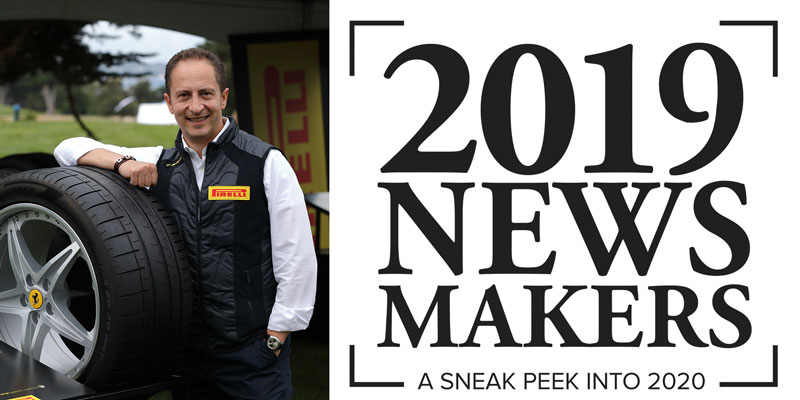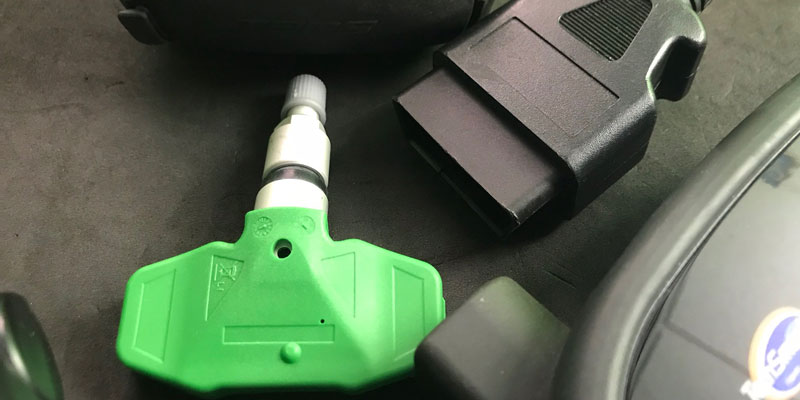
Car Dealers want your tire business, but do they have a glass jaw?
Sometimes the biggest threat can come from behind – and in very subtle ways.
Though you may not have considered car dealers as legitimate competition in the past, it’s high time you did.
Back to the early 2000s, General Motors, working with Boston Consulting Group, looked at ways to increase service business for its dealers. The study concluded that 75% of maintenance customers serviced their cars where tires are sold. And that 78% of maintenance customers buy tires from the first person that recommends a tire purchase.
As a result, more and more GM brand dealers began including tires in their service offering, and that spread from badge to badge, car dealer to car dealer. Growth was slow but steady; in 2002 P-metric tire shipments, car dealers barely registered but by 2014 car dealers held an 11% replacement market share, according to Tire Review estimates.
With an ever-growing number of car dealers taking tire sales seriously, how might it affect your business? And how can you fight back?
Tires as a Target
Like so many business models that underwent a major shift during the Great Recession, those economically sluggish years are the root cause of car dealers’ heightened focus on service and tire sales.
“At the bottom of the downturn in 2010-11, with new and used car sales off between 30% and 35%, OEMs and car dealers realized that in order to stay profitable, they had to focus on whatever area of their business they could,” explains Mark Rogers, 20 group manager and dealer consultant for the National Automobile Dealers Association (NADA).
A combination of factors – largely the fact that people were keeping cars longer and spending more to maintain them – led to the solution: service and maintenance. Especially tires.
“When we started looking into things, we found that about 83% of customers who buy a set of tires from a car dealer will service their vehicle at a dealership,” Rogers says. “It didn’t take us long to think that if we want to increase our service business, we needed to focus on tires.”
He estimates that 80% to 90% of all new car owners service their under-warranty vehicles at the car dealership. After the warranty period ends, though, roughly 70% to 80% of the service business car dealers lose comes from what Rogers refers to as wheel well items – tires, alignments, brakes, shocks, struts, etc.
“OEMs have realized the retention issue – they understand that service is the way to keep customers and that they are losing customers when warranties end. In order to compete, we can’t let our customers go. It’s a cradle-to-grave approach in which a dealer wants to sell someone their first car, their last car and all the maintenance in between.”
The strategy is simple: at the time when most new car warranties end at 36,000 miles, the original tires are nearing the end of their useful life. Car dealers performing one last bit of warranty work have the perfect opportunity to bring up the subject of replacement tires.
“If a customer comes in toward the end of the warranty period, a dealer can comment that their tires are getting worn and talk them through their options.”
The majority of auto dealers take slim profit margins on tires – the average is 13%, according to Rogers – and use them as a loss-leader to keep maintenance customers.
“In many cases, car dealers are not making anything on tires; it’s often looked at as a cost of advertising,” he explains. “Instead of spending $10,000 on service advertising, they accept a lower margin on tire sales and count that as sort of a supplement to advertising.”
With NADA studies clearly indicating that tire sales have a direct relationship to service department profitability, automakers sprung into action. Ford and General Motors advertise more heavily for their dealers’ service departments than ever before, and Toyota has offered a ‘buy three, get one free’ tire promotion for about four years in different regions of the company, according to Rogers.
How Dealers Get Tires
For years, independent tire dealers counted auto dealerships among their best customers, not their competition. Many, in fact, bragged about all the money they made selling tires to local car dealers.
Jim Melvin Jr., president of Melvin’s Tire Pros in North Kingstown, R.I., recalls going to a meeting put on by Ford with his father about 16 years ago. “They said, ‘Gentlemen, we’re coming out with an Around the Wheel program that’s going to be a way that you can provide car dealers with tires,’” Melvin says, adding, “My father leaned over to me and said, ‘This is the beginning of the end.’ He was right.”
Though Melvin’s Tire Pros still counts car dealers as part of its wholesale business, the amount has shrunk drastically from a decade ago, according to Melvin.
Because automakers have realized the true value of tire sales, they are heavily involved in the distribution chain, often to the point of instructing car dealers where to buy tires.
“For example, Ford offers a tire program and suggested suppliers, and when the local dealer buys tires through that local supplier, Ford probably gets a certain amount of cash per tire sold for recommending them,” explains Rogers, adding that more aggressive auto dealers use a combination of OEM programs and local independent tire dealers or wholesalers to get the best all-around deal.
“We used to sell a lot of tires to car dealerships from our store,” says Alpio Barbara, owner of Redwood General Tire Pros in Redwood City, Calif. “We’re down about $200,000 a month because now they’re buying through Dealer Tire. The parts department tells us they like to buy from us because they can buy only the amount they need and get twice-a-day delivery, but now the car manufacturer is telling them they have to buy through this channel because there are incentives on the backside.
“The ultimate thing is Ford Motor Co. has a lot better buying power than an independent tire dealer does. The buying price they have is unbelievable.”
In addition to large-scale national and regional wholesalers (like ATD, Tire Rack, etc.), Cleveland-based Dealer Tire is a very large part of the car dealer tire distribution chain.
Founded in 1999 by Scott and Dean Mueller, former owners of the highly successful Mueller Tire & Brake retail chain, Dealer Tire is a national distributor that provides program management, logistics and IT services to assist automakers and their franchised dealers in selling replacement tires and parts.
According to a press release issued in November, Dealer Tire manages replacement tire and parts programs for 23 automotive OEMs in the U.S. and eight in Canada, while serving more than 10,000 dealers through 42 distribution centers.
The company also operates RightTurn.com, a consumer facing tire-buying website that helps consumers “find the right tire” for their particular vehicle, and then points them directly to car dealers for installation. Last fall, Adweek magazine reported that RightTurn.com increased its annual media spend from less than $1 million to $25 million for 2015, and planned to broaden its reach to multiple U.S. cities.
Dealer Tire declined to participate in this story.
For tire manufacturers, working with carmakers and their dealers is simply part of doing business.
“It is important that our products are available where the consumer chooses to shop, including car dealers and independent tire dealers,” says John Baratta, president of consumer tire replacement sales at Bridgestone Americas.
“Consumer preferences vary when buying tires, whether the purchase is from an independent tire dealer, a car dealership, a wholesale club or an Internet retailer,” shares Marc Pasquet, vice president of sales at Michelin North America. “Michelin does not own any retail outlets, therefore, we work closely with all of these retail channels.
“The retailer that focuses on a distinct value proposition for the consumer and executes it well will win over time. Ultimately, it comes down to providing the best consumer experience.”
Guaranteed Loyalty
 Although a car dealer’s goals are different from those of a tire dealership, car dealers increasingly see the benefits of being branded as a tire destination. One such car dealership spoke with Tire Review, sharing what it sees as the benefits of growing its tire business.
Although a car dealer’s goals are different from those of a tire dealership, car dealers increasingly see the benefits of being branded as a tire destination. One such car dealership spoke with Tire Review, sharing what it sees as the benefits of growing its tire business.
The owner of a Maine-based Subaru dealership purchased his company after spending 12 years with Ford. The dealer also sells used cars. He leveraged his experience at Ford to craft his dealership’s tire-based loyalty program, called “Tires for Life.”
His program began in 2003 as a way to build up a trustworthy used car business. The idea was simple: If a customer purchased a car and took it to his dealership for all of its service, he would know everything about the car when it came time to take it as a trade-in and resell it as a used vehicle. This allowed the dealer to stake his reputation on the reliability of those used cars. In exchange for their loyalty and diligence, the dealer would reward customers with one key thing: free tires for the lifetime of the vehicle, up to a value of $2,000.
At the time his program was first implemented, similar programs were already widely used across the U.S., but many of those had loopholes that made it easy for car dealers to get out of the contracts.
“In 2004 and 2005, third-party vendors sold these programs to car dealers and told them to use it as a tool to sell the car and then find a way to kick them off the program,” says the owner. He took the opposite approach, even to the point of allowing people to purchase their way back into the program.
For customers that stray from the dealership’s maintenance menu but still make a good-faith effort to have all service done at the location, the dealership asks customers to contribute to the costs of those missed scheduled services to the price of the set of four tires.
“We’ll explain to a customer that they don’t qualify because they didn’t do all of their maintenance with us. But, we understand that life happens. So we’re willing to do something,” says the owner. “Your car needs tires, and tires are $800. You made an effort to maintain the program. The way we fund the program is that you’re going to spend roughly $800 in maintenance with us across 30,000 miles. You missed two oil changes – $65 bucks – how about we prorate the tires and give you a new set for $65?”
Very few people ever protest pitching in the cost of missed services, according to this car dealer. He told Tire Review that since the program’s inception, he’s given away more than $1.7 million worth of tires.
The program has not only improved his used car business’ reputation, it’s also boosted his service sales and overall customer retention. He says that his service and parts business is 30% higher than the dealership’s sales line warrants, meaning that for the amount of cars that the dealer sells, its service department should be a third smaller than what it is.
When it comes to customer retention, his loyalty numbers are 20 to 30 points higher than the national average for Subaru dealers.
Firsthand Experience
In a recent Consumer Reports satisfaction study, subscribers scored independent repair shops higher than car dealers when it comes to service and overall satisfaction, as well as price, quality, courteousness of the staff, and work being completed when promised. Basically, just about every criteria.
Yet, underestimating car dealers and considering their service departments inferior can land independent tire dealers in a world of hurt. While researching car dealers for this piece, Tire Review secret-shopped a number of car dealers across the country to better gauge the experience a customer might have dealing with a car dealer service department.
We started secret shopping on the phone. A few auto dealers worked with our caller to identify the correct tire for the presented vehicle based on year, make and model, and a few others directed our caller to where they could find their tire size. Other car dealers stopped the phone call if we did not have the tire size or VIN readily available.
Once tire size was established, we encountered a wide range of interactions over the phone. Some car dealers listed all of their tire supplier’s options in that size, and it was common for the car dealer to recommend the direct OE replacement or other “automaker-approved” replacement tires.
In some cases, however, the car dealers either made a recommendation based on price, knowing very little about the tire itself, or called its tire supplier with the vehicle information and asked them for a recommendation. In the cases where we shopped for a 2001 Volkswagen Jetta, the best recommendations came from car dealers that called their tire supplier for help.
That being said, not all recommendations from car dealer service departments were bad. Some recommended tires based on their experiences, or cited “low road noise” or the tire being the “best value for the dollar” as reasons for their recommendations. Others discussed the importance of getting the right speed rating and offered more than just OE tires.
The better car dealers all encouraged us to call back if there were more questions.
Most car dealers we approached gave full prices – including installation – over the phone. A few of the more savvy dealers recommended an alignment when purchasing four tires. But no one spoke about TPMS, even when shopping a TPMS-equipped 2011 Toyota RAV4.
Often, scheduling service over the phone required redirecting the call from the parts department (which, most often, made the actual tire recommendation) to the service department. In most cases, car dealers said they needed 24-hour notice to schedule a tire installation.
With more than 20 calls placed to car dealers in various cities, only one dealer actually attempted to close a sale by scheduling the caller for tire installation. No one else asked for the sale.
For mystery shopping done in-person, car dealers delivered a mixed bag of results.
Overall, we found the trip from car door to counter riddled with obstacles. A customer must first navigate the car dealer’s packed parking lot, and then find the service department, which is usually to the side of the building or in the back of a showroom littered with car salespeople. In most cases, there wasn’t even a distinguishable counter in the service department.
Service advisors were usually well-meaning and followed a dialogue similar to what was experienced on the phone. Surprisingly, not one car dealer service writer bothered to inspect our vehicle’s tires, even in the cases where a service advisor actually walked out to the vehicle to check the tire size.
Despite these missteps, one car dealer stood out above the rest in terms of professionalism. While at the counter inquiring about tires, the service advisor introduced himself and repeated a line similar to that of a good tire dealership: “The best part of purchasing tires from us is that we provide our customers with free lifetime rotation and a two-year road hazard warranty.”
This car dealer also noted that it would even price-match our tire purchase up to 30 days after the sale, and printed out a fact sheet about the tire they recommended, including pricing, product features, specifications and a look at the tread.
Other car dealers were not so helpful.
One was running a promotion for a $13 oil change. Once inside the service department, there was no discernable customer counter or waiting area, and the service advisor explained that he could get the vehicle in for an oil change and tire service at the same time, but they did not schedule tire service on weekends so they would need us to “come in sometime next week.”
When asked what tire he would recommend, one service advisor searched his tire supplier’s website in front us, naming a few brands and prices, until he finally suggested an import tire priced around $50 a unit. When asked about that particular brand, he said they used it on their used cars.
When questioned again as to what made that tire so cheap versus other tires, the service advisor simply said that at that price, “you’ll get what you pay for.”
A Trainer’s Perspective
Because of the variety of experiences at auto dealerships, Tire Review reached out to Kai Ramadan, director of parts and services at JM Family Enterprises, which owns Southeast Toyota Distributors, an independent distributor of Toyota and Scion brand cars. The distributor sees itself as vital in the success of its customers – independent auto dealerships – and thus provides training, marketing and other business services.
In working with automotive dealers, Ramadan has noticed car dealership service centers grow over the last decade, with many doing more than just warranty work.
Southeast Toyota also partners with TBC Corp. for tires and training.
Southeast Toyota and TBC, according to Ramadan, tell its dealers to start any potential customer – tires or not – with a vehicle inspection.
“We instruct all of our service writers to do a walk-around with the customer and gather their information,” said Ramadan. “At the end of the day, our biggest opportunity is in inspecting the car and making that offer to the consumer. We focus on that before we focus on how to sell a tire.”
Southeast Toyota’s dealers are welcome to carry any tire they want and are encouraged to present tire offers in the familiar “good/better/best” manner, but Ramadan told Tire Review that the majority of his customers are seeking name brand tires. Carrying name brands like Michelin, Bridgestone and Goodyear “legitimizes that we are in the tire business,” he says.
Southeast Toyota provides its dealers with custom marketing services that frequently utilize tire manufacturer rebates and promotions. Ramadan also spoke about price, saying that using rebates and promotions, sticking to small margins and utilizing TBC as a buying partner helps them keep tire costs low.
“Tires are low margin, even if you’re not a car dealer,” said Ramadan. “The benefit of putting tires on a consumer’s vehicle is in building a relationship with them. They’ll return and they’ll return more often than the consumer that doesn’t purchase the tires from you. That loyalty factor has been a big part of our strategy to growing our business.”
 How You Can Win
How You Can Win
Judging from some of the examples above, the car dealers that really focus on their tire business are using many of the same tactics as tire dealers to win customers.
There are ways to differentiate and fight back, though.
While NADA offers support and automakers provide tire training, independent tire dealers believe car dealers still lag behind when it comes to tire expertise.
“The only thing they do is replace what comes off,” asserts Redwood General’s Barbara. “Car dealers do not know speed ratings, what tire needs to be on the car, etc. If it’s an OE replacement, they’re going to be fine. But if for some reason the customer previously replaced OE tires with ones that weren’t properly matched to their vehicle, then car dealers are going to perpetuate that error.
“They simply do not have the training and knowledge that we have, since most of us have been selling tires for 30 to 40 years – some of us even more.”
Though this may be the case in some situations, Rogers asserts that car dealers can be knowledgeable “regarding the more complicated matters.”
“Using the owner’s manual as a guide, a car dealer service department can also refer a customer to someone from the front end of the store to talk about how the car was designed,” he explains. “The dealership environment can talk about the entire process of designing the car, the purpose it was built for, the suspension and what it was built to handle, and the best type of tire available to maximize the potential of the car.”
Educating – and frequently reminding – your customers that they do not need to return to the car dealer for routine or “scheduled” maintenance work in order to keep their manufacturer’s warranty is key, according to Barbara. “They should go back to the dealer if it’s a no-charge repair that’s under warranty, or if there’s a recall,” he says. “But they can go anywhere for other work – we have to get that message across.”
Enacted in 1975, the Magnuson-Moss Warranty Act, administered by the Federal Trade Commission makes it illegal for a car dealer to deny vehicle warranty coverage simply because the owner had routine maintenance or repairs performed by an independent service shop – including tire dealers.
“The only advantage that we have as independent tire dealers is that we truly care about our customers,” Barbara continues. “Our employees aren’t selling tires or warranties on a commission-type basis, or as an add-on sale.”
NADA’s Rogers admits that one aspect where auto dealers service departments struggle is convenience. “You can get in and out of a Jiffy Lube in 30 minutes. Getting in and out of a car dealer in half an hour is not impossible, but it’s rare because of the computer system and the fact that they don’t just do tires or oil changes.”
Though OEMs are helping their dealers address that challenge by establishing quick service lanes – roughly 70% of the car dealer market is offered a quick service investment of some type, according to Rogers – this is still one area that independent tire dealers can excel in the eyes of customers.
From a convenience standpoint, car dealers certainly face challenges. Where consumers will often choose convenience – a tire and service provider near work or home – car dealers aren’t necessarily located in the easiest to get to places, and very few have multiple locations saturating a region.
Because car dealers are often able to offer low prices on tires, independents may be forced to follow suit to remain competitive – and then emphasize any service-related cost savings that will appeal to customers.
“We include car dealers when we shop our competition on price, which we never did before,” Melvin explains. “I not only want to know what they’re charging for a four-wheel alignment and brake job, but I want to know what they’re charging for a P245/65R17 Goodyear Fortera.
Staff at Redwood General emphasize the service areas in which the shop is more cost-competitive than car dealers, according to Barbara. “If a customer is already at the car dealer, we can’t address that. But when they come into our store, we start comparing our other prices. We don’t charge $700 for a 30,000-mile service and we don’t charge exorbitant rates for an oil change.”
“There’s no question that the car dealer is slowly becoming one of the greatest competitors to the independent tire dealer,” Melvin says. “Any tire dealer that doesn’t stand up and recognize that really needs to before it’s too late.”
Recognition certainly is the first step. But just as in the past when new competitors entered the scene – mass merchandisers, online tire sellers, etc. – smart tire dealers need to closely examining their own business for weaknesses and opportunities.
Become fully educated and adjust your strategy where needed, even if that means cutting sales to that competition. Remember, car dealers don’t care about your business, neither do mass merchants or price clubs or parts chains or websites. And you already know how your tire suppliers feel.
Do those things necessary to be No. 1 with your customers and you’ll succeed, just as before.
By Matt Bemer, Kristen Criswell & Denise Koeth














